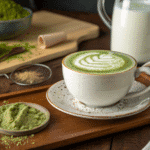What are calves used for and how to stretch them? Stretching Calf Muscles is essential for improving flexibility, preventing injury, and enhancing recovery. The calf (triceps surae) plays a vital role in running, jumping, and balance, making proper stretching key for athletic performance and everyday mobility.
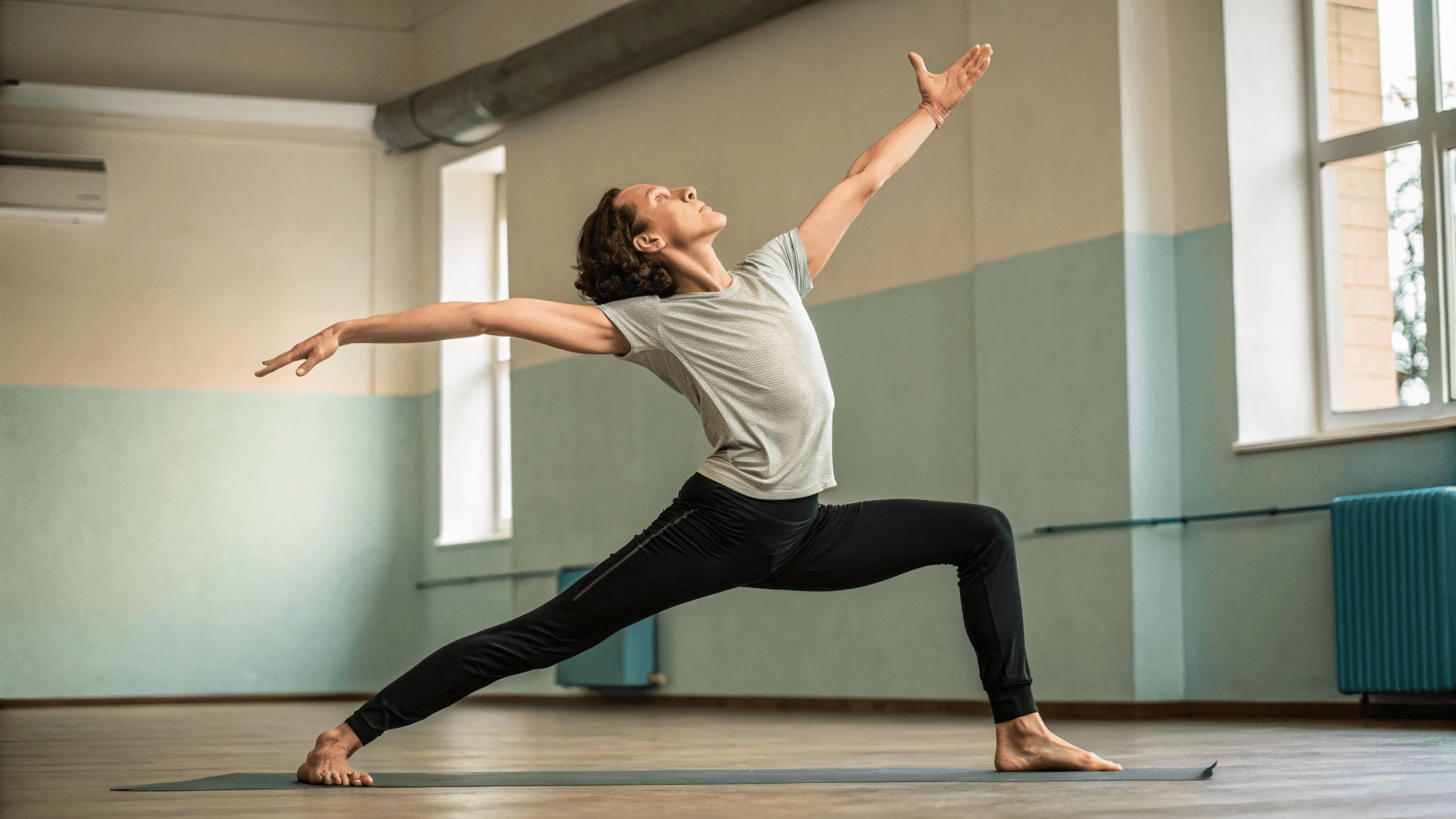
Stretching Calf Muscles : The triceps surae consists of three muscles:
The lateral gastrocnemius, on the outside of the leg, which is involved when the leg is extended, assists in plantar flexion and knee flexion.
The medial gastrocnemius, on the inside of the leg, which has the same actions as the lateral gastrocnemius.
The soleus, covered by the gastrocnemius. Isolating the soleus is difficult since it is involved in every calf exercise, especially when standing.
These muscles attach to the foot via the Achilles tendon (tendo calcaneus).
They are used in all plantar flexion positions, whether sprinting, jumping, or changing direction.
Strong gastrocnemius muscles help stabilize the knee and perform squats, reducing the risk of injury.
The muscle fibers in the calf are different.
The gastrocnemius is mainly made up of fast fibers (type 2). It benefits from heavy, intense work, unlike the soleus fibers (type 1, endurance fibers).
Stretching Calf Muscles : Benefits of calf stretches
-Improved knee integrity thanks to attachment to the femur.
-Reduced pain and sprains in the ankles.
-Performance in sprinting, quick starts, and jumping (football, athletics, basketball, etc.).
-Better support for changes of direction (tennis, crossovers in basketball, etc.).
Stretching Calf Muscles : Warm-up and dynamic stretching for the calves
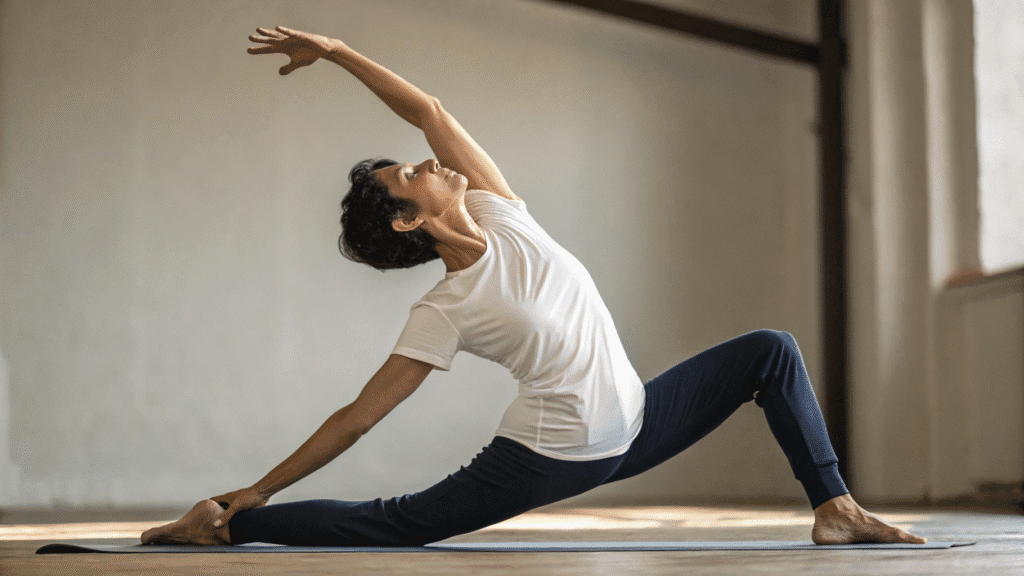
Calf warm-ups are essential for any sport or strength training.
Even for upper body movements such as military presses or bench presses. Better support will always be useful when lifting the bar.
Don’t forget to change the angle of the calf stretch, starting with your feet in a neutral position, then moving them outwards and finishing with them inwards.
Dynamic calf stretches are listed in order. You can use them in sequence to warm up before a workout.
Rotations articulaires des chevilles
Repetitions: 15 on each side
Key points:
Rotate your ankles outward, then inward.
Ballet dancer calf raises
Repetitions: 20 on each side
Key points:
1. Start standing with your legs spread apart as far as possible.
2. Exhale as you do calf raises.
3. Stretch yourself tall by raising your arms as you contract your calves.
Go further:
You can change the movement by turning your feet inward and then outward.
You can also do this stretch on one side at a time, which will improve your sense of balance.
Walking on your heels
Repetitions: 10 to 15 on each side
Key Points:
Place your body weight on your heels, keeping your back straight
Walk in this manner for at least 10 steps on each leg
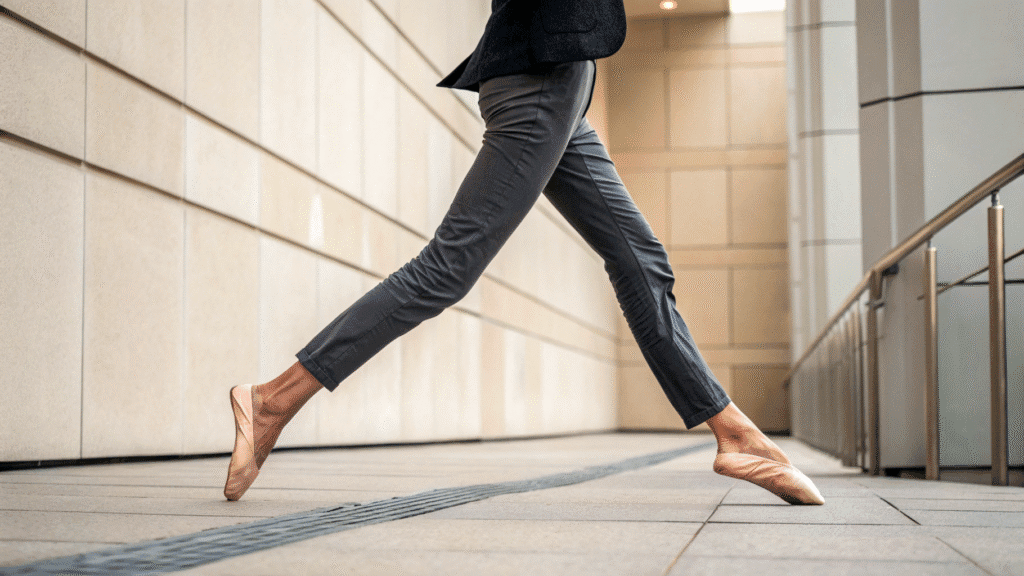
Walk on the outside and then the inside of your ankles.
Repetitions: 10 to 15 on each side
Key points:
Place your body weight on the outside of your ankles
Take at least 10 steps on each leg before doing the same thing with your ankles on the inside
PS: If you look like a duck, you’re doing the stretch correctly.
Calf stretches with pressure from the opposite heel on the floor
Repetitions: 5 to 10 on each leg
Key points:
Start standing with your legs shoulder-width apart.
Inhale as you lift your head, begin to exhale, then initiate a forward bend by rolling your vertebrae one by one.
Place your palms on the floor, closer to or further from your feet depending on your flexibility.
Bend one leg, pushing the opposite heel into the floor
Change feet with each full breath
Once finished, first place your hands on your knees while bending them, then finish by gently rolling your spine
Going further:
Once your calves are stretched, you can play with tilting your hips to the side. You’ll get two stretches in one.
Stretching Calf Muscles : Calf stretches and flexibility exercises
The calves can be stretched unilaterally with ease. This advantage will assist you in correcting asymmetries.
Unilaterally, you will always have greater range of motion and flexibility.
To stretch the calves effectively, it is best to spread your legs in a lunge position to press your heels against the floor.
The angle of the calf stretch can be changed to “isolate” the muscles.
When the leg is bent, the gastrocnemius muscle will be stretched more.
If the leg is straight, the soleus muscle will be stretched.
Calf stretch, bent leg (PNF technique)
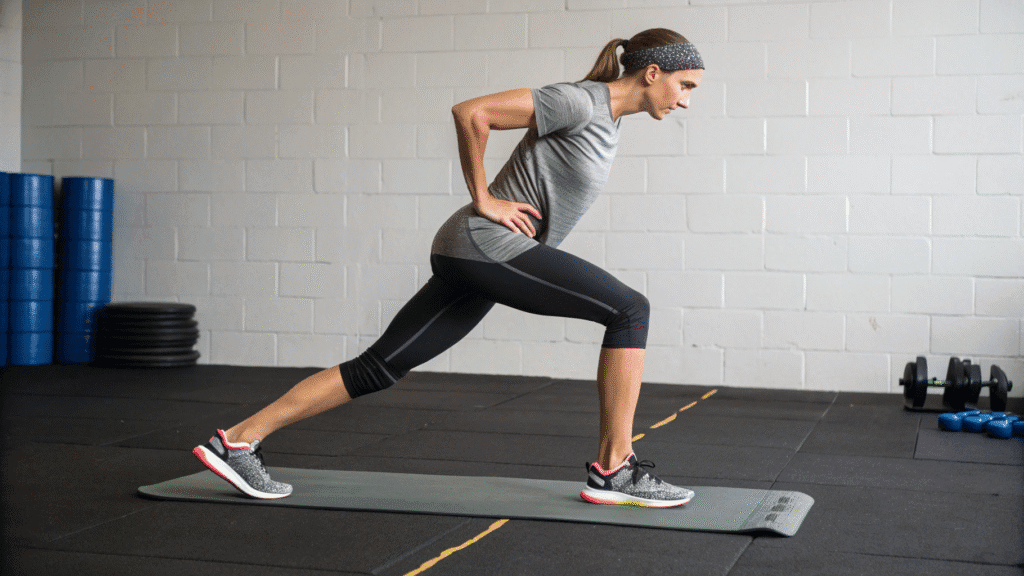
Key points:
-Stand facing a wall, legs shoulder-width apart.
-Bend your front leg and fully extend your back leg.
-Exhale and push against the wall for at least 5 seconds to stretch your calves.
-Inhale and let your calves relax for 5 seconds.
-Exhale and push against the wall again for 5 seconds.
Tip:
Try to knock the wall down.
Stretching the soleus muscle
Key points:
-Stand close to a wall, legs shoulder-width apart.
-The front foot is stretched against the wall.
-Exhale and bring your knee (leg still straight) closer to the wall to stretch your calves.



